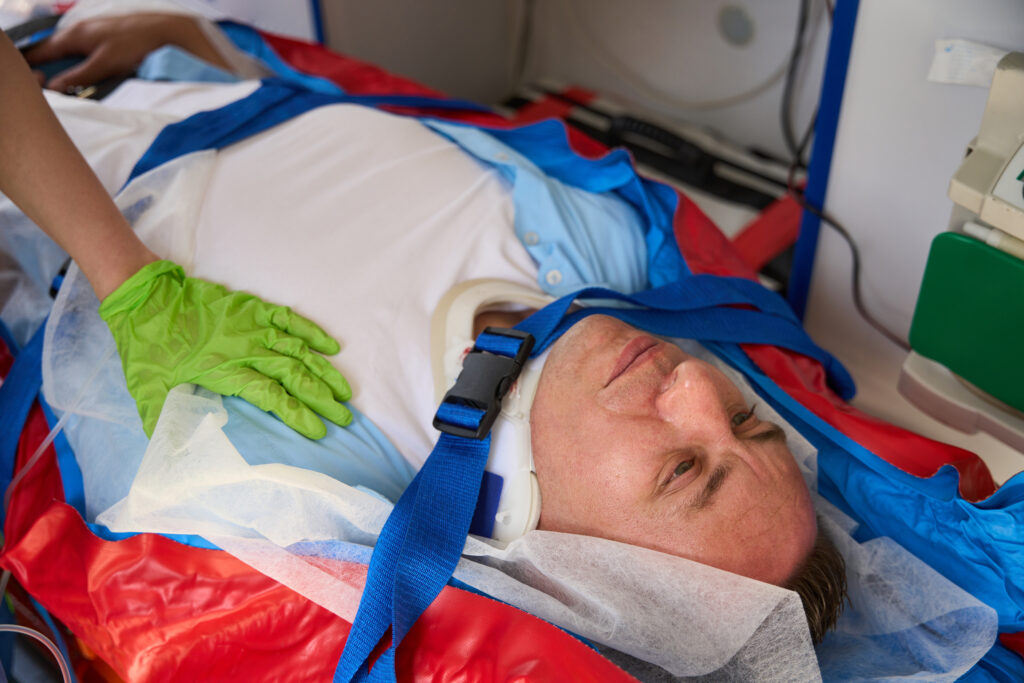
When “Nowhere to Go” Becomes a Compliance Problem
I think many have heard me discuss a common scenario with which hospitals are grappling: patients who are medically ready for discharge, but have no

It’s more than just a matter of time.
I have discussed many times on Monitor Mondays the controversial Food and Drug Administration (FDA) accelerated approval of Aduhelm, the intravenous medication for Alzheimer’s dementia – and the correct decision by the Centers for Medicare & Medicaid Services (CMS) to only cover the medication in clinical trials.
Well, last week trial results were released for another drug, lecanemab, in the same class, and also seeking FDA accelerated approval. And as with Aduhelm, there was significant improvement in amyloid plaque in the brain, but the clinical improvement, while statistically significant, was not clinically significant, with a difference of 0.45 on an 18-point scale.
Now, will more time show more clinical improvement? We all hope so, but it is too early to say. Also of note was that two patients who received the medication died from brain hemorrhage. It will be interesting to see the FDA review results, and ultimately the CMS decision on this drug.
Speaking of accelerated approval, as a reminder, there is an FDA program for important drugs to be provisionally approved while awaiting definitive studies. Well, last week a drug approved under accelerated approval was withdrawn from the market. The drug, Sulfamylon, is used for treatment of burns. Now, a drug withdrawal is not unusual, but this case is. The drug was approved under accelerated approval in 1998, and now, 24 years later, the drug company determined that they cannot afford the trial required to get full approval. Yep: for 24 years, the FDA allowed an unproven medication to be used. One has to wonder about a system that allows this to happen.
Last week also saw the publication of a study looking at the effectiveness of spinal cord stimulators for chronic pain. In this trial of patients with past lumbar surgery, every patient was treated with the standard of having a trial period prior to the actual implantation, and every patient that had benefit had the device implanted. But then the stimulators were programmed to either give the proper cord stimulation or stimulation at a frequency that can best be described as a placebo. And the pain relief experienced by both groups appeared to be equal. Of course, this was not a definitive study, and limited to a small subset of patients with chronic lumbar pain, but it should lead to a careful analysis to determine for whom these devices truly add benefit.
Next, some of you may have heard that the mayor of New York City is directing police and healthcare workers to hospitalize unhoused mentally ill patients involuntarily, even if they do not pose a risk to themselves or others.
Now, of course, this has huge legal, ethical, and financial implications, but I won’t address those – but rather point out that I doubt any hospital in New York City, or the country has the capacity and resources to care for these patients. In fact, the access to inpatient psychiatric care for patients is currently at an unsustainably low level.
Now, is this a welcome first step by a government to address the issue of the unhoused that was simply not well thought-out? Time will tell. I do not think anyone would disagree that more resources are necessary to address the social determinants of health (SDoH).
Programming note: Listen to Dr. Ronald Hirsch as he makes his rounds every Monday on Monitor Mondays and sponsored by R1 Physician Advisor Solutions.


I think many have heard me discuss a common scenario with which hospitals are grappling: patients who are medically ready for discharge, but have no

Healthcare compliance professionals have long wrestled with the problem of copied-and-pasted notes in medical charts. When clinicians copy-forward prior entries or borrow from templates, auditors
Please log in to your account to comment on this article.

Sepsis remains one of the most frequently denied and contested diagnoses, creating costly revenue loss and compliance risks. In this webcast, Angela Comfort, DBA, MBA, RHIA, CDIP, CCS, CCS-P, provides practical, real-world strategies to align documentation with coding guidelines, reconcile Sepsis-2 and Sepsis-3 definitions, and apply compliant queries. You’ll learn how to identify and address documentation gaps, strengthen provider engagement, and defend diagnoses against payer scrutiny—equipping you to protect reimbursement, improve SOI/ROM capture, and reduce audit vulnerability in this high-risk area.

Only ICD10monitor delivers what you need: updates on must-know changes associated with the FY26 IPPS, including new ICD-10-CM/PCS codes, CCs/MCCs, and MS-DRGs, plus insights, analysis and answers to your questions from two of the country’s most respected subject matter experts.

This third session in our 2026 IPPS Masterclass will feature a review of FY26 changes to the MS-DRG methodology and new technology add-on payments (NTAPs), presented by nationally recognized ICD-10 coding expert Christine Geiger, MA, RHIA, CCS, CRC, with bonus insights and analysis from Dr. James Kennedy.

This second session in our 2026 IPPS Masterclass will feature a review the FY26 changes to ICD-10-PCS codes. This information will be presented by nationally recognized ICD-10 coding expert Christine Geiger, MA, RHIA, CCS, CRC, with bonus insights and analysis from Dr. James Kennedy.

Federal auditors are zeroing in on Inpatient Rehabilitation Facility (IRF) and hospital rehab unit services, with OIG and CERT audits leading to millions in penalties—often due to documentation and administrative errors, not quality of care. Join compliance expert Michael Calahan, PA, MBA, to learn the five clinical “pillars” of IRF-PPS admissions, key documentation requirements, and real-life case lessons to help protect your revenue.

During this essential RACmonitor webcast Michael Calahan, PA, MBA Certified Compliance Officer, will clarify the rules, dispel common misconceptions, and equip you with practical strategies to code, document, and bill high-risk split/shared, incident-to & critical care E/M services with confidence. Don’t let audit risks or revenue losses catch your organization off guard — learn exactly what federal auditors are looking for and how to ensure your documentation and reporting stand up to scrutiny.

Learn how to navigate the proposed elimination of the Inpatient-Only list. Gain strategies to assess admission status, avoid denials, protect compliance, and address impacts across Medicare and non-Medicare payors. Essential insights for hospitals.

RACmonitor is proud to welcome back Dr. Ronald Hirsch, one of his most requested webcasts. In this highly anticipated session, Dr. Hirsch will break down the complex Two Midnight Rule Medicare regulations, translating them into clear, actionable guidance. He’ll walk you through the basics of the rule, offer expert interpretation, and apply the rule to real-world clinical scenarios—so you leave with greater clarity, confidence, and the tools to ensure compliance.
Happy National Doctor’s Day! Learn how to get a complimentary webcast on ‘Decoding Social Admissions’ as a token of our heartfelt appreciation! Click here to learn more →
CYBER WEEK IS HERE! Don’t miss your chance to get 20% off now until Dec. 2 with code CYBER24